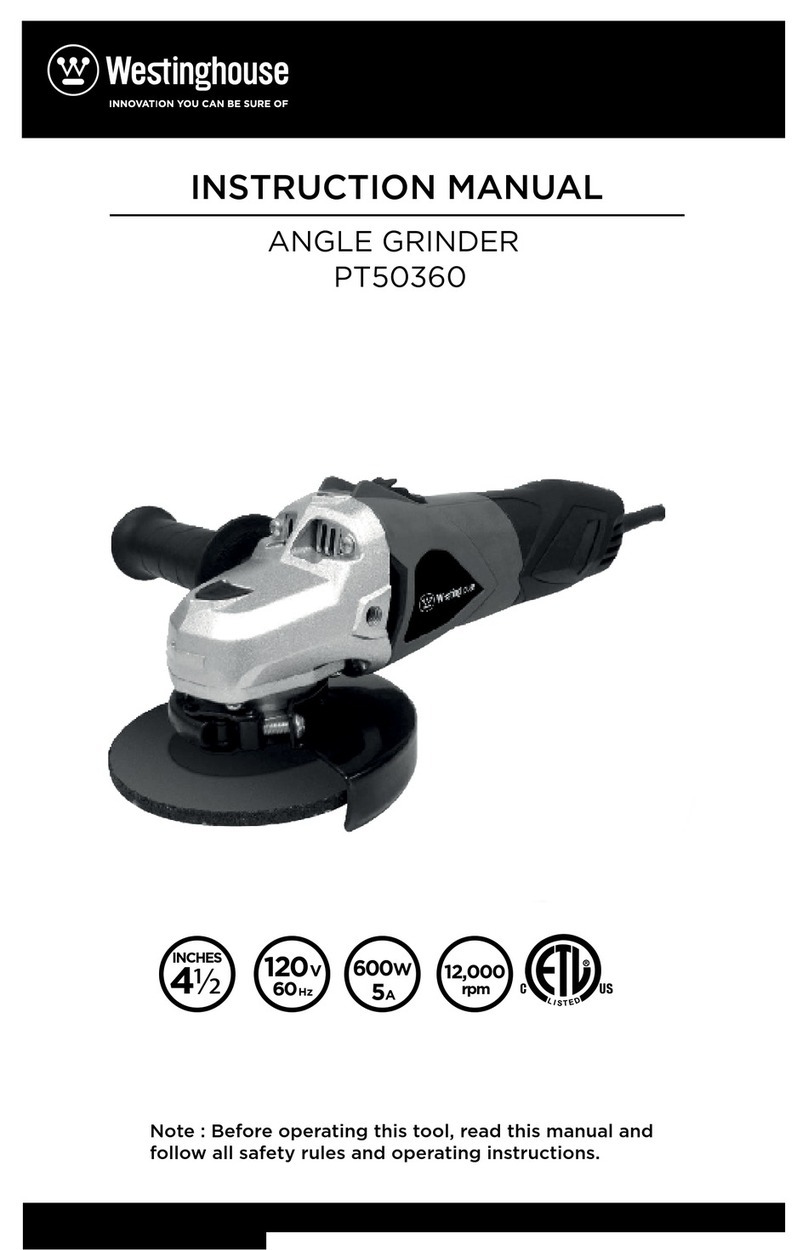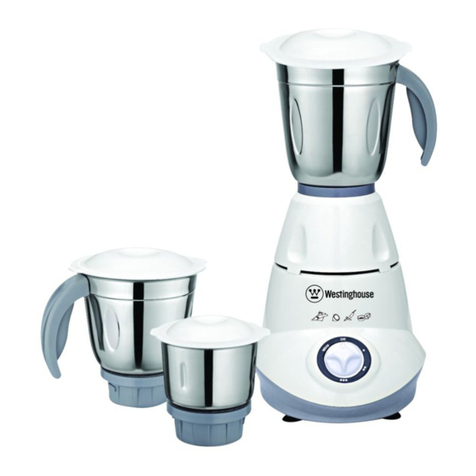SAFETY INSTRUCTIONS
3
a) This power tool is intended to function as a grinder, sander, wire brush, polisher or
cut-off tool. Read all safety warnings, instructions, illustrations and specifications
provided with this power tool. Failure to follow all instructions listed below may result in
electric shock, fire and/or serious injury.
b) Operations such as grinding, sanding, wire brushing, polishing or cutting-off are not
recommended to be performed with this power tool. Operations for which the power tool
was not designed may create a hazard and cause personal injury.
c) Do not use accessories which are not specifically designed and recommended by the
tool manufacturer. Just because the accessory can be attached to your power tool, it
does not assure safe operation.
d) The rated speed of the accessory must be at least equal to the maximum speed
marked on the power tool. Accessories running faster than their rated speed can break
and fly apart.
e) The outside diameter and the thickness of your accessory must be within the capacity
rating of your power tool. Incorrectly sized accessories cannot be adequately guarded or
controlled.
f) The arbour size of wheels, flanges, backing pads or any other accessory must
properly fit the spindle of the power tool. Accessories with arbour holes that do not
match the mounting hardware of the power tool will run out of balance, vibrate excessi-
vely and may cause loss of control.
g) Do not use a damaged accessory. Before each use inspect the accessory such as
abrasive wheels for chips and cracks, backing pad for cracks, tear or excess wear, wire
brush for loose or cracked wire. If power tool or accessory is dropped, inspect for
damage or install an undamaged accessory. After inspecting and installing an acces-
sory, position yourself and bystanders away from the plane of the rotating accessory
and run the power tool at maximum no-load speed for one minute. Damaged acces-
sories will normally break apart during this test time.
h) Wear personal protective equipment. Depending on application, use face shield,
safety goggles or safety glasses. As appropriate, wear dust mask, hearing protectors,
gloves and workshop apron capable of stopping small abrasive or workpiece fragments.
The eye protection must be capable of stopping flying debris generated by various
operations. The dust mask or respirator must be capable of filtrating particles generated
by your operation. Prolonged exposure to high intensity noise may cause hearing loss.































